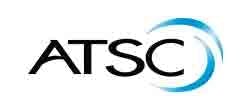The Advanced Television Systems Committee announced that the Physical Layer transmission system for ATSC 3.0 video broadcasting has been approved as a final standard, signaling that the standardization process for the entire ATSC 3.0 process is nearing completion. ATSC members approved the ATSC 3.0 Physical Layer Candidate Standard through balloting completed yesterday.
"The hundreds of technology experts from around the world who have contributed their time and expertise to this process have selected the best and most flexible transmission system as the foundation of ATSC 3.0. While other ingredients of the ATSC 3.0 standard are still in the final stages of standardization, the approval of the over-the-air transmission system is a foundation for the future," said ATSC President Mark Richer.
The ATSC 3.0 Physical Layer (ATSC A/322) is designed for greater flexibility, robustness and spectral efficiency than the current digital TV broadcast standard, which was approved by the FCC two decades ago. The new ATSC 3.0 Physical Layer is intended to allows TV broadcasters to choose from a variety of transmission parameters so that each station can tailor its signal to best serve its local market by providing the combination of services and coverage area best suited for the market and its terrain.
"We're likely to see both 4K Ultra HD broadcasts running side-by-side with robust mobile broadcasts to handheld devices, thanks to the innate flexibility of ATSC 3.0's Physical Layer. The system will allow high-capacity modes when stunning video is more important. And it also permits lower-capacity transmissions with extremely high robustness for receivers on the go," Richer said.
Key capabilities of the ATSC 3.0 Physical Layer include use of single frequency networks, multiple physical layer pipes, and channel bonding. Selected technologies allow for data transmission with a range of guard intervals, forward error correction (FEC) code lengths and code rates.
Work continues apace on the other elements of the suite of ATSC 3.0 standards. Earlier this year, the A/321 System Discovery and Signaling (colloquially called "the bootstrap") part of the Physical Layer was standardized, and a number of other ATSC 3.0 standards are nearing the conclusion of the standardization process.
Proposed and Candidate Standards will include video and audio compression, high dynamic range (HDR), wide color gamut and immersive sound, closed captioning, advanced emergency alerting, security, companion devices, personalization, applications and interactivity, watermarking and fingerprinting, and IP delivery. Some 20 standards are expected to be part of the final ATSC 3.0 suite of standards by early next year.
